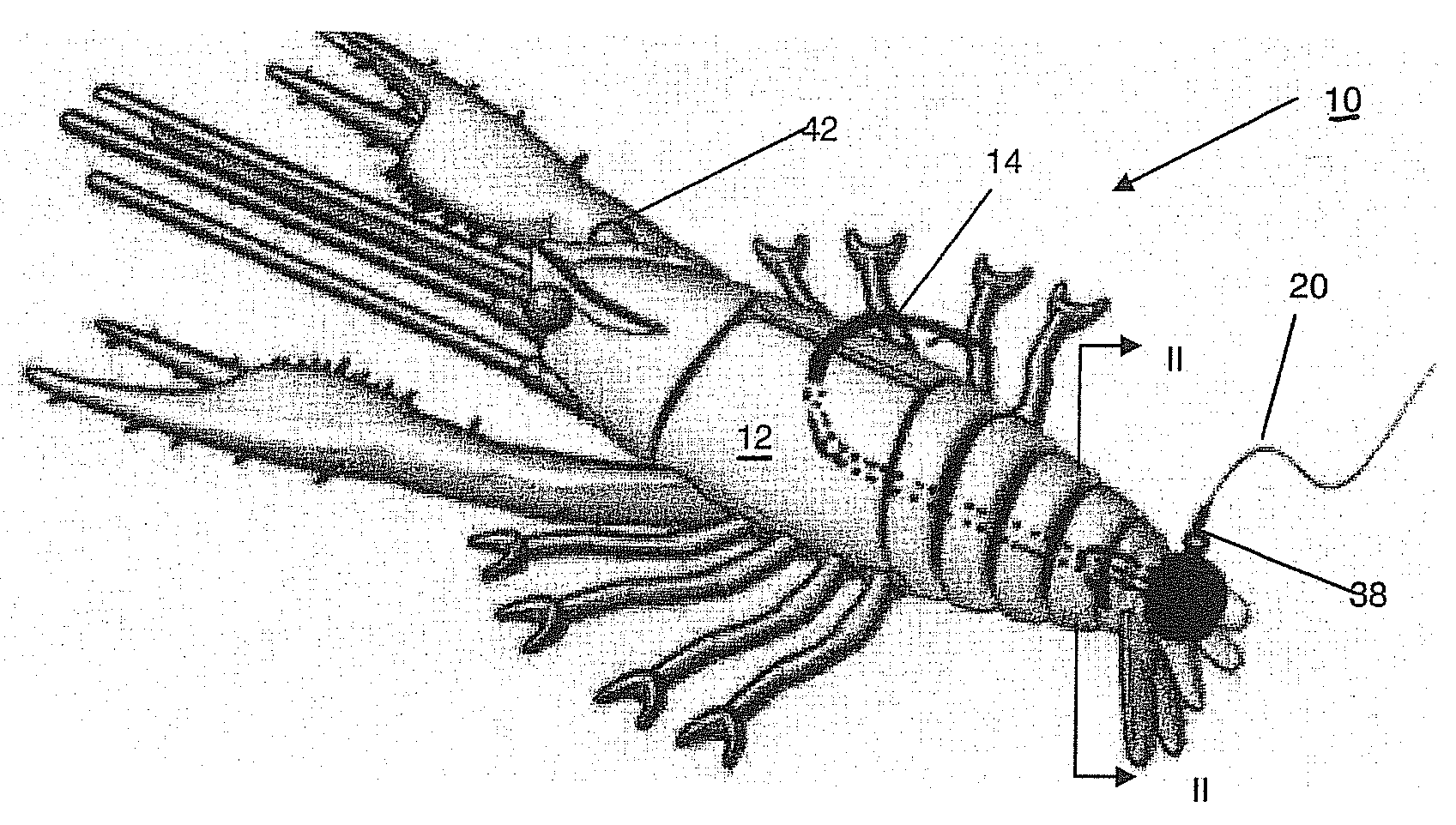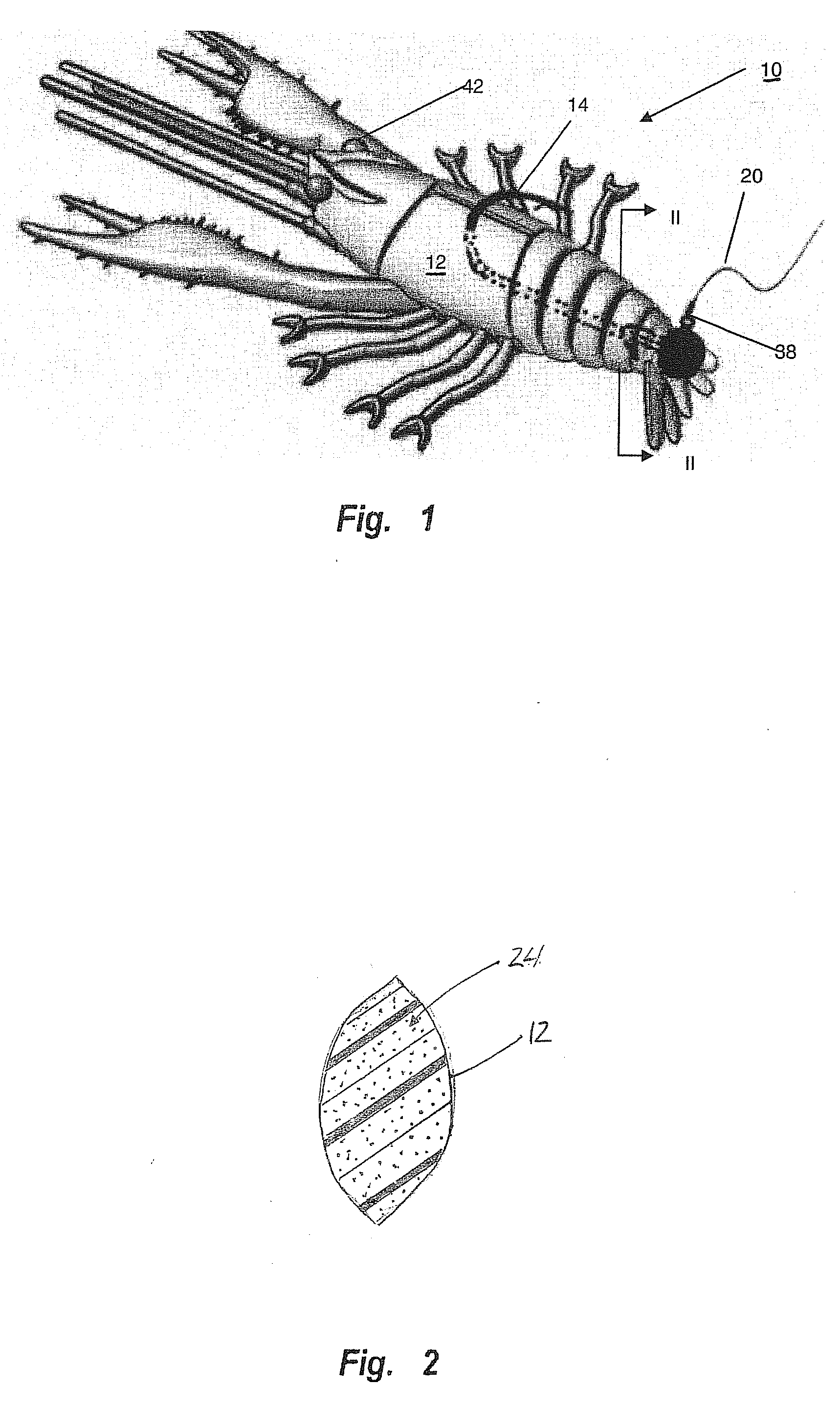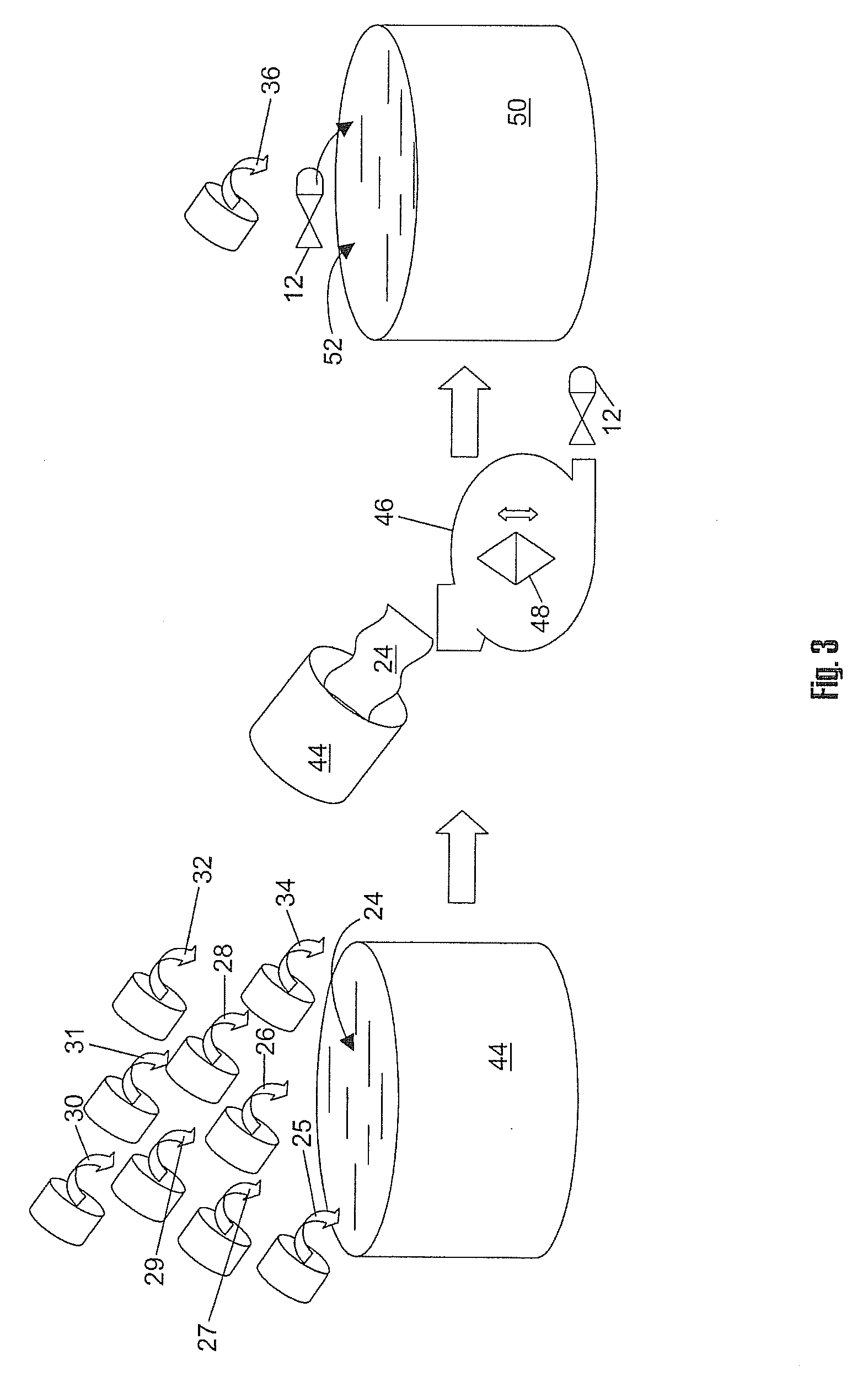Biodegradable fishing lure and manufacturing methods
a technology applied in the field manufacturing methods, can solve the problems of inability to easily set and shape the material produced, the design of detailed designs or widely varied colors, and the current availability of biodegradable fishing lures does not compare favorably with existing polyvinyl chloride (pvc)-based fishing lures, etc., to achieve the effect of simple manufacturing and us
- Summary
- Abstract
- Description
- Claims
- Application Information
AI Technical Summary
Benefits of technology
Problems solved by technology
Method used
Image
Examples
example 1
[0073]A composition, such as material 24 above, of following formulation was prepared:
ComponentAmount (% (w / w))PVA (25) (98.5–99.2% hydrolyzed,25.5with a DP of 1,700)Water (27)10.2Urea (30)45.9MPG (31)17.9Agar (32)0.5
[0074]Manufacturing process: the various ingredients were loaded in a mixing apparatus or machine 44, heated to 110 degrees Celsius and mixed to produce small spheres of the material 24. The spheres were then added to the injection machine 46 and heated to 135 degrees Celsius to melt completely and injected into a steel mold 48 to take the shape of the cavity in the mold 48. The resulting products are fishing lures 12 made from a single piece of biodegradable material 24. The lures 12 at this stage are hard when ejected from the mold 48. Then follows an expansion stage in which the lures 12 are soaked in the water bath 50. Scent 36 may be added to the water bath 50 at the time the lures 12 are soaked so that the scent 36 will be incorporated into the lures 12. The mater...
example 2
[0076]Alterations to the composition of the material make it possible to control the hardness of the finished product. Accordingly, lures 12 with the following formulations were prepared:
Amount (% (w / w))ComponentFormulation AFormulation BPVA (25) (98.5–99.2% hydrolyzed,25.537.0with a DP of 1,700)Water (27)10.222.2Urea (30)45.925.9MPG (31)17.90.0Agar (32)0.50.0Glycerin (26)0.014.9
[0077]Manufacturing procedure: formulations of the above compositions were prepared and followed the same manufacturing procedure as Example 1.
[0078]Lures 12 made from formulation A had a Shore reading of 12 on an ASTM D2240 C type scale, whilst lures 12 made from formulation B had a reading of 30.
example 3
[0079]Compositions of the following formulations, with or without agar 32, were prepared to evaluate the benefit of using agar 32 in the production of the lures 12:
Amount (% (w / w))ComponentFormulation AFormulation BPVA (25) (98.5–99.2% hydrolyzed),20.720.5with a DP of 1,700Water (27)12.412.3Urea (30)31.130.8MPG (31)14.514.4Agar (32)0.00.9Gelatin(28)0.60.6Silicon dioxide (29)20.720.5
[0080]Manufacturing procedure: formulations of the above compositions were prepared and followed the same manufacturing procedure as Example 1, but were molded in the shape of stick worms, which were 135 mm long. The head section was 10 mm in diameter, the body 12 mm and the tail 8 mm. The lures 12 reached this full size after being placed inside the water bath 50 at 25 degrees Celsius for 8 hours.
[0081]Method of testing: immediately after production, the individual weights of the lures 12 were recorded. The lures 12 were then left to dry out on a table in a room with 70% humidity, and their weight record...
PUM
 Login to View More
Login to View More Abstract
Description
Claims
Application Information
 Login to View More
Login to View More - R&D
- Intellectual Property
- Life Sciences
- Materials
- Tech Scout
- Unparalleled Data Quality
- Higher Quality Content
- 60% Fewer Hallucinations
Browse by: Latest US Patents, China's latest patents, Technical Efficacy Thesaurus, Application Domain, Technology Topic, Popular Technical Reports.
© 2025 PatSnap. All rights reserved.Legal|Privacy policy|Modern Slavery Act Transparency Statement|Sitemap|About US| Contact US: help@patsnap.com



